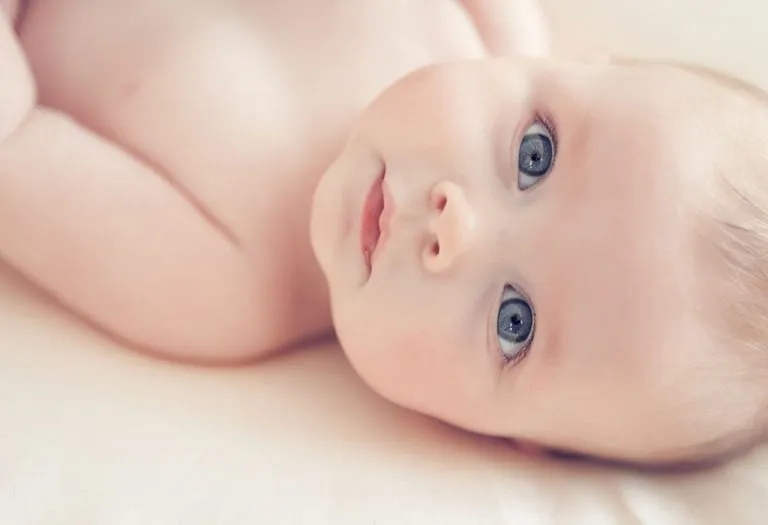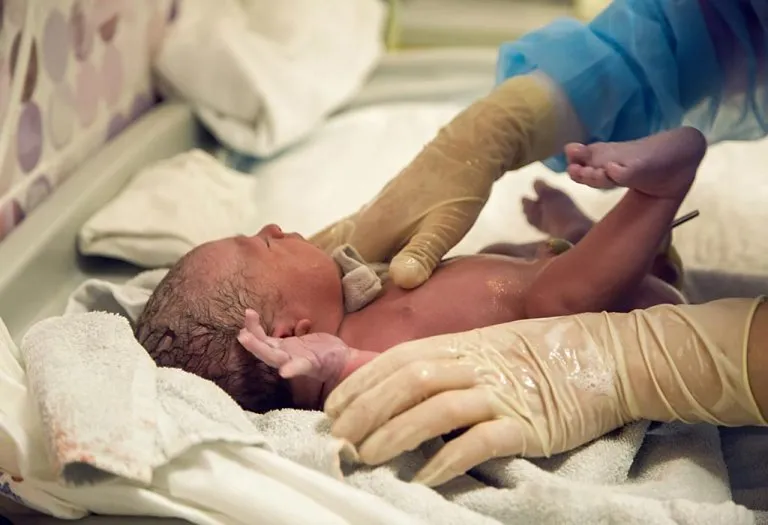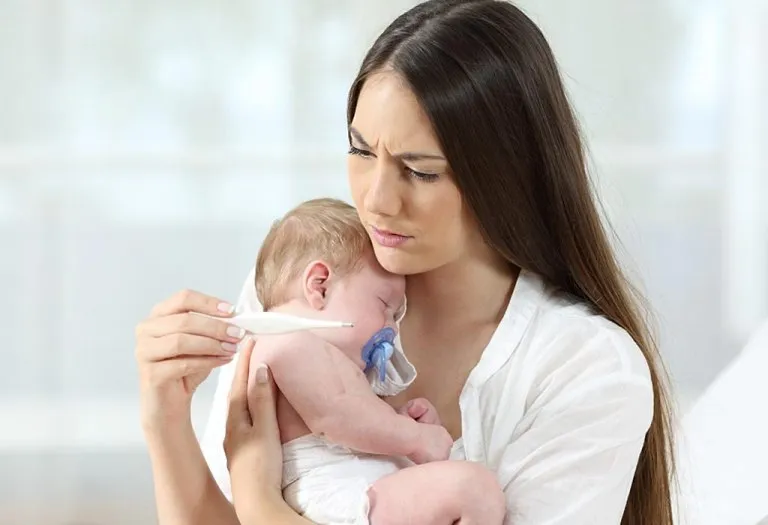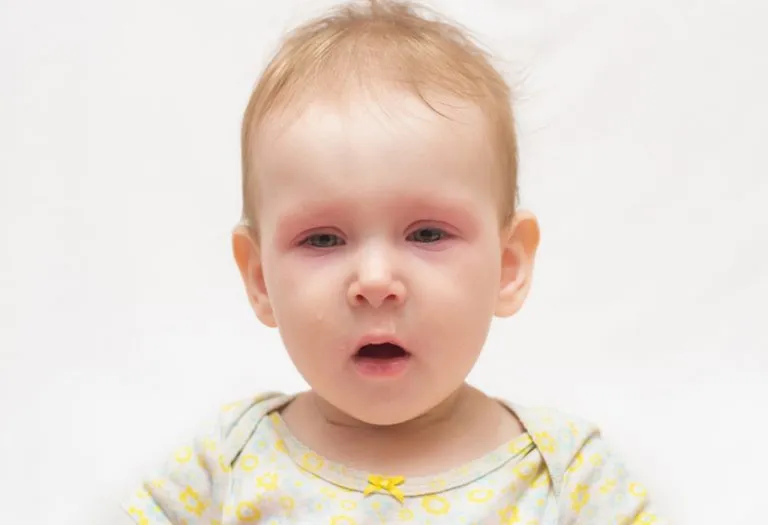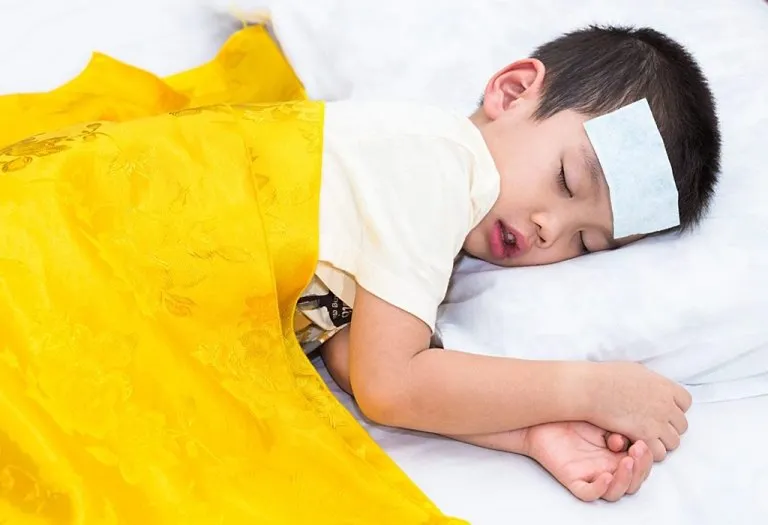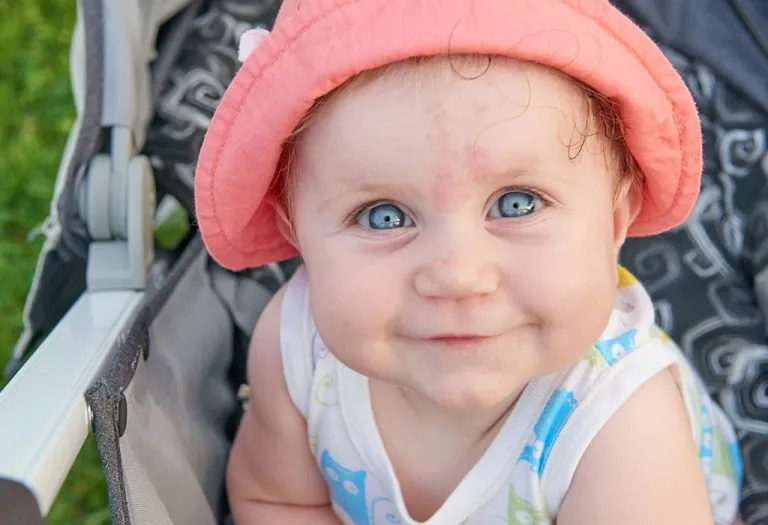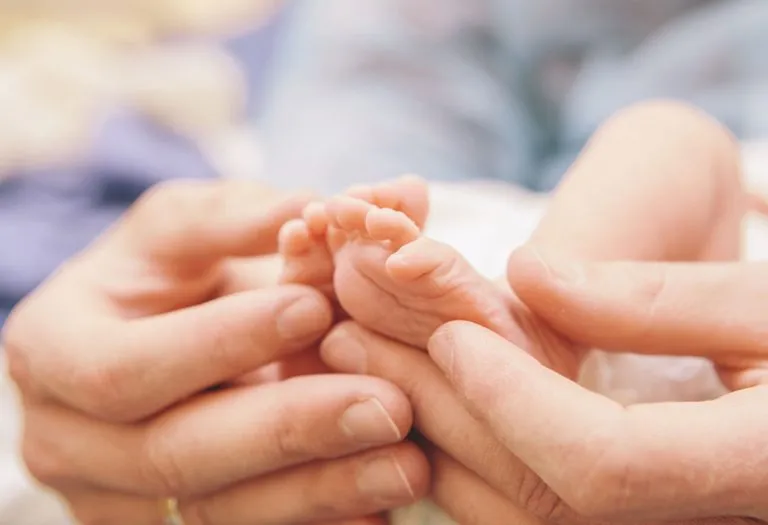Are All Babies Are Born With Blue Eyes? Know The Facts
- Is It True That All Babies Are Born With Blue Eyes?
- The Science Behind Blue Eyes
- Reasons for Blue Eyes in Babies
- Predicting Blue Eye Color
- When Should You Worry?
- FAQs
New parents find everything adorable and special about their newborn babies, from their smiles to their eyes. So it’s no wonder that babies born with blue eyes become extra special, as blue eyes are quite rare. Blue-eyed babies are found adorable by most people. However, their eyes may change as they grow up as the body produces more melanin. This often leads to the question: Are all babies born with blue eyes? While many newborns have blue or grayish eyes at birth, not all retain the same shade as they grow. The final eye color depends on genetics and melanin production. Parents often wonder if their baby’s eyes will remain blue or change color as he grows up.
Is It True That All Babies Are Born With Blue Eyes?
Do all babies have blue eyes? In the early 20th century, one often sees blue eyes described as ‘baby blues’ as a natural eye-development phase. This description often suggests that most babies are born with blue eyes. However, this is not true as most babies in the world are born with brown eyes. Though many Caucasian babies are born with blue or grey eyes, other ethnic group babies, including Asian and Hispanic babies, are mostly born with brown eyes (1).
The Science Behind Blue Eyes
Eye color is a term that refers to the iris color, not the color of the whole eye. Iris is a ring around the black colored pupil. The color of the iris is determined by the amount of melanin present in it (2). Melanin is a brown color pigment, so the darker the eye or iris color, the more melanin present. Blue or light-colored eyes mean little melanin present in the eyes, not the presence of blue pigment in the eyes. Iris is formed of three layers, and babies with brown eyes have melanin in all three layers. A baby with blue eyes has melanin in its back layer only. The back layer mostly absorbs the light entering the eyes, and the particles present in the middle layer of the iris reflect the remaining light out as blue color, so the baby’s eyes appear to be blue.
Melanin is a natural pigment or a protein secreted by melanocytes, a special kind of cells. Melanocytes produce melanin in the presence of daylight. The newborn baby has spent all its life’s months in the womb away from light, so the melanocytes present in its body didn’t have much light to trigger the melanin production in its irises. Though for many babies, melanocytes don’t need daylight to produce melanin or pump melanin in the developing irises. These babies are born with eyes color brown or dark. Blue eyes baby is born with light-colored or blue eyes, due to less melanin present in the eyes. However, less melanin is not the only reason for blue eyes in a baby. Ethnicity and parents or ancestors with blue eyes also play a role in a baby born with blue eyes.
Reasons for Blue Eyes in Babies
A baby’s eye color depends on various factors. Below are some key reasons why a baby may have blue eyes:
1. Genetics
Genetics play a crucial role in determining a baby’s eye color. The presence of blue eyes in parents, grandparents, or even distant relatives can increase the likelihood of a baby having blue eyes. Caucasian or European ancestry also raises the chances of blue eyes compared to other ethnicities. The amount of melanin in the iris is influenced by multiple genes, making it possible for two brown-eyed parents to have a blue-eyed baby if a recessive blue-eye gene is present in their family history (3). Similarly, two blue-eyed parents are more likely to have a blue-eyed baby, but genetic variations can still lead to different eye colors.
2. Syndromes and Conditions
Certain genetic syndromes and medical conditions can also contribute to blue eyes. Conditions such as Waardenburg syndrome, which affects pigmentation, may result in blue or even differently colored eyes (4). Albinism, a condition characterized by low melanin production, can lead to very light blue or grey eyes (5). Other rare conditions can impact melanin distribution in the iris, leading to blue eyes even in individuals with no family history of blue eyes.
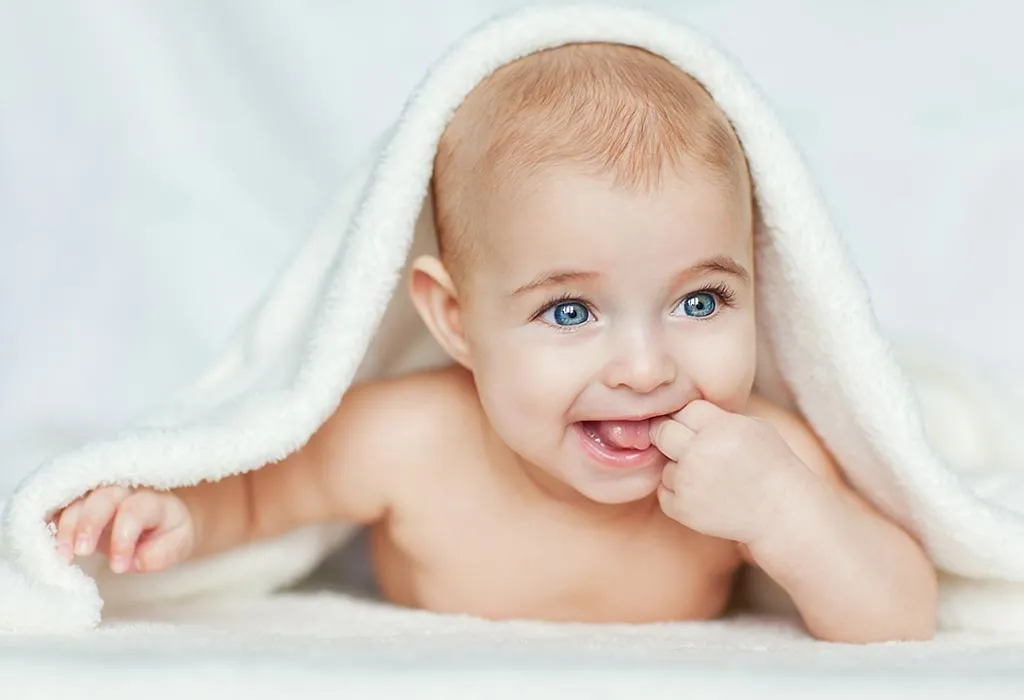
Predicting Blue Eye Color
The blue eyes at the birth of a baby may change as the baby grows up and the melanin production increases (6). Therefore, a baby with blue eyes can have brown eyes as they grow. There is no set time to determine when the newborn blue eyes will change color, as not every eye color changes. Sometimes, the baby’s eyes remain of the same color as he was born with, and sometimes a baby’s eyes change color for more than one time.
Genetics play a major role in eye color, as it determines the amount of melanin secretion in the baby’s iris. A baby inherits one gene from each parent, and both these genes determine the eye color, along with other things. Here are a few predictions on how to know if baby’s eyes will stay blue or if they will change color:
- Most babies with one parent having brown eyes and one parent having blue eyes will have brown eyes, as the darker color gene dominates or controls the eye color.
- Both parents having blue eyes will result mostly in a blue-eyed baby.
- Due to a recessive blue-eyed gene in the family, a baby with parents of brown eyes color can have blue eyes.
- Due to ancestors with brown-eyes, both parents having blue eyes can give birth to babies with brown eyes.
- Brown and blue are not the only eye colors. There are many more colors like hazel, green, or grey, which depend on the parents’ eye color, genes, and melanin present in the iris.
- Less melanin secretion results in the same blue color eyes and more melanin secretion may change the eye color to green, hazel, or brown.
When Should You Worry?
While blue eyes in babies are generally not a cause for concern, there are instances where medical attention may be necessary:
- If the baby’s blue eyes appear cloudy, which could indicate congenital cataracts (7).
- If one eye is a different color than the other, it could be a sign of a genetic condition like Waardenburg syndrome.
- If the baby has very light or almost translucent blue eyes, which may indicate albinism or an issue with melanin production.
- If there is a sudden change in eye color after six months, particularly if one eye changes while the other does not.
- If the baby exhibits sensitivity to light along with blue eyes, which could indicate an underlying eye condition (8).
- If there are other developmental concerns or vision-related issues accompanying the blue eyes.
FAQs
1. Do blue-eyed babies have better vision than babies with darker eyes?
Eye color does not directly affect vision quality, but lighter-colored eyes, including blue eyes, are more sensitive to bright light due to lower melanin levels in the iris. This can make blue-eyed babies more prone to glare and light sensitivity.
2. Are blue-eyed babies more prone to eye diseases?
Blue-eyed individuals have lower melanin levels, which can make their eyes more vulnerable to UV damage and certain conditions like macular degeneration later in life. However, in infancy, this does not typically pose an immediate concern.
This was all about newborns with blue eyes. The complex genetic process controls the eye color of the baby. Sometimes, the baby’s blue eye color may change as the baby grows up. So, it’s difficult to accurately predict the baby’s eye color based on the parents’ eye color or the eye color a baby is born with.
References/Resources:
1. When Do a Baby’s Eyes Change Color?; Dean McGee Eye Institute; https://dmei.org/blog/when-do-a-babys-eyes-change-color/
2. Eye color: The myth; Myths of Human Genetics; John H. McDonald University; https://udel.edu/~mcdonald/mytheyecolor.html
3. White. D, Rabago-Smith. M; Genotype–phenotype associations and human eye color; Journal of Human Genetics; https://www.nature.com/articles/jhg2010126; October 2010
4. Waardenburg Syndrome; Cleveland Clinic; https://my.clevelandclinic.org/health/diseases/24012-waardenburg-syndrome
5. Albinism; Mayo Clinic; https://www.mayoclinic.org/diseases-conditions/albinism/symptoms-causes/syc-20369184
6. What Color Will My Baby’s Eyes Be?; American Academy of Pediatrics; https://www.healthychildren.org/English/ages-stages/baby/Pages/Newborn-Eye-Color.aspx
7. Why Are My Eyes Changing Color?; American Academy of Ophthalmology; https://www.aao.org/eye-health/tips-prevention/why-are-my-eyes-changing-color
8. Infant Vision: Birth to 24 Months of Age; American Optometric Association; https://www.aoa.org/healthy-eyes/eye-health-for-life/infant-vision?sso=y
Also Read:
Infant Rubbing Eyes
Watery Eyes in Infants
Eye Problems in Infants
When Can Babies See Colour
Ideas for Visual Stimulation in Infants
When Do Newborns Make Eye Contact
Was This Article Helpful?
Parenting is a huge responsibility, for you as a caregiver, but also for us as a parenting content platform. We understand that and take our responsibility of creating credible content seriously. FirstCry Parenting articles are written and published only after extensive research using factually sound references to deliver quality content that is accurate, validated by experts, and completely reliable. To understand how we go about creating content that is credible, read our editorial policy here.






